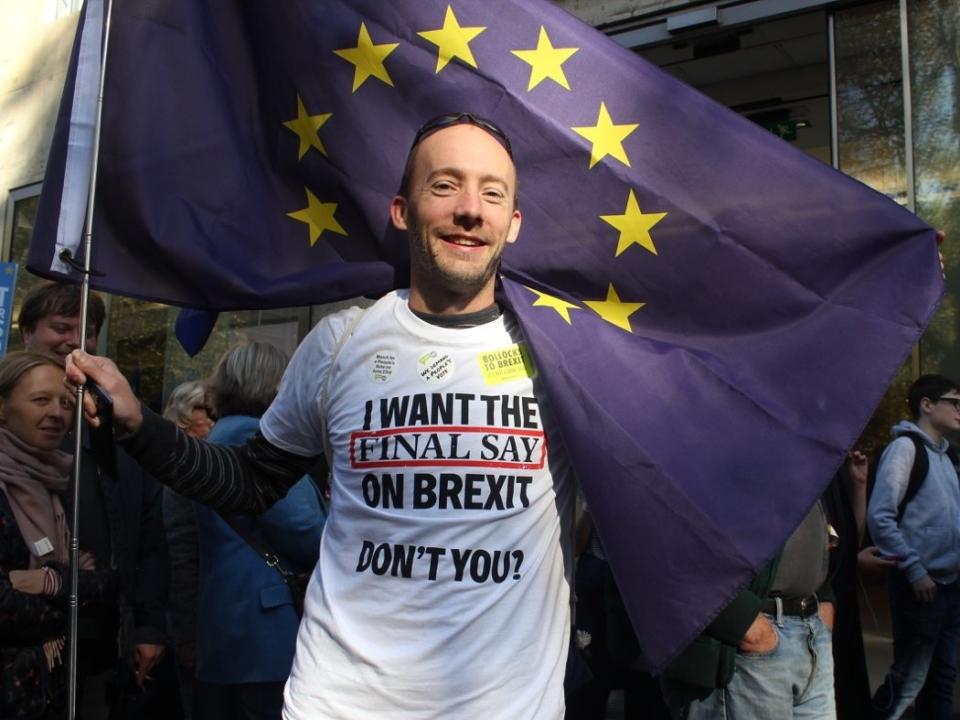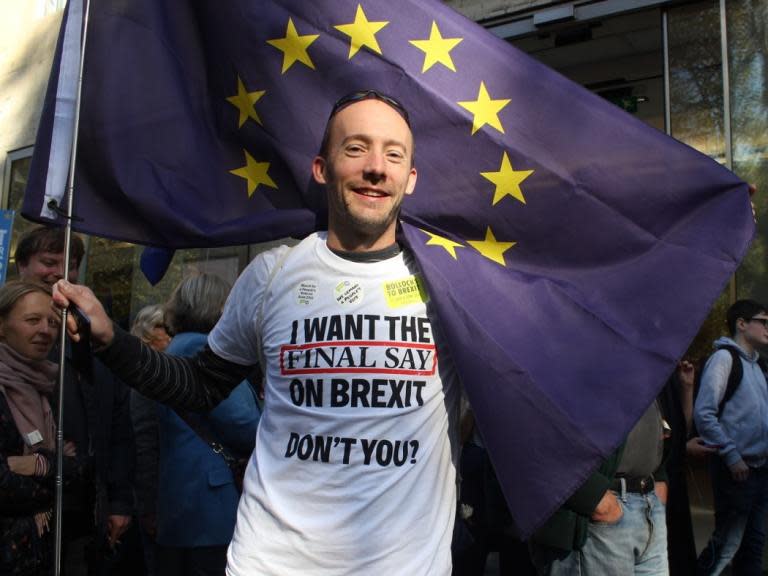The final steps needed to deliver a Final Say referendum
After two years of tortuous negotiations and with no solution to the Commons deadlock, campaigners are taking their demands for a Final Say referendum to Theresa May’s doorstep.
This was supposed to be the UK’s final week in the European Union, but the weakened prime minister has failed to get her Brexit deal through the deeply divided Commons, prompting MPs to compel her to seek a delay to exit day on March 29.
The ongoing chaos has galvanised the public, who are expected to turn out in their thousands for the Put It To The People march today to show their overwhelming support for a fresh vote.
But how could a second referendum come about?
There are no fixed rules on how to trigger a referendum, although legislation needs to be passed in parliament to fix the date of the vote and to frame the rules of the campaign.
It took nearly a year to organise the original EU referendum in 2016 but experts at UCL’s respected Constitution Unit say it could be done in 21 weeks.
The Electoral Commission is primed in case it needs to respond to an unscheduled poll but even if legislation is rushed through parliament, the campaign still must last at least 10 weeks.
The watchdog would also need time to test the question on the ballot paper, which could prove highly divisive. Brexiteers will undoubtedly want a credible Leave option, possibly no deal, while pro-EU campaigners will demand the chance to stay in the EU on the ballot.
To trigger a Final Say referendum, the government would need to support the plan. Ms May has always been firm in her opposition to another public vote – but the public will remember she broke her promise not to hold a general election in 2017. She is also running out of options to resolve the Brexit crisis.
One scenario could see Ms May offer a second referendum to MPs in exchange for supporting her Brexit deal. Labour MPs Phil Wilson and Peter Kyle have worked up an amendment for a “confirmatory vote”, where approval of the prime minister’s deal in the Commons would be conditional on throwing the question to the public.
The Kyle-Wilson plan, as it is known, was drawn up in consultation with Jeremy Corbyn’s frontbench, suggesting it could secure that all-important Labour support in the Commons.
It might overcome speaker John Bercow’s ruling that the prime minister cannot bring back her deal without “substantial changes”. Her Brexit plan would certainly look different if it had a second referendum attached to it.
Another scenario gaining momentum in Westminster is indicative votes. These would test the will of parliament by giving MPs a series of non-binding votes on their preferred Brexit options.
It is expected to come to a head on Monday when cross-party backbenchers, led by Labour’s Hilary Benn, attempt to seize control of the Commons timetable to allow for indicative votes on Wednesday.
Downing Street is understood to be considering seven different options for the votes, including the prime minister’s deal, a second referendum, a no-deal Brexit or the deal plus membership of a customs union and single market.
If a second referendum wins a large backing, then the prime minister will be forced to give serious consideration to the prospect.

 Yahoo News
Yahoo News 

